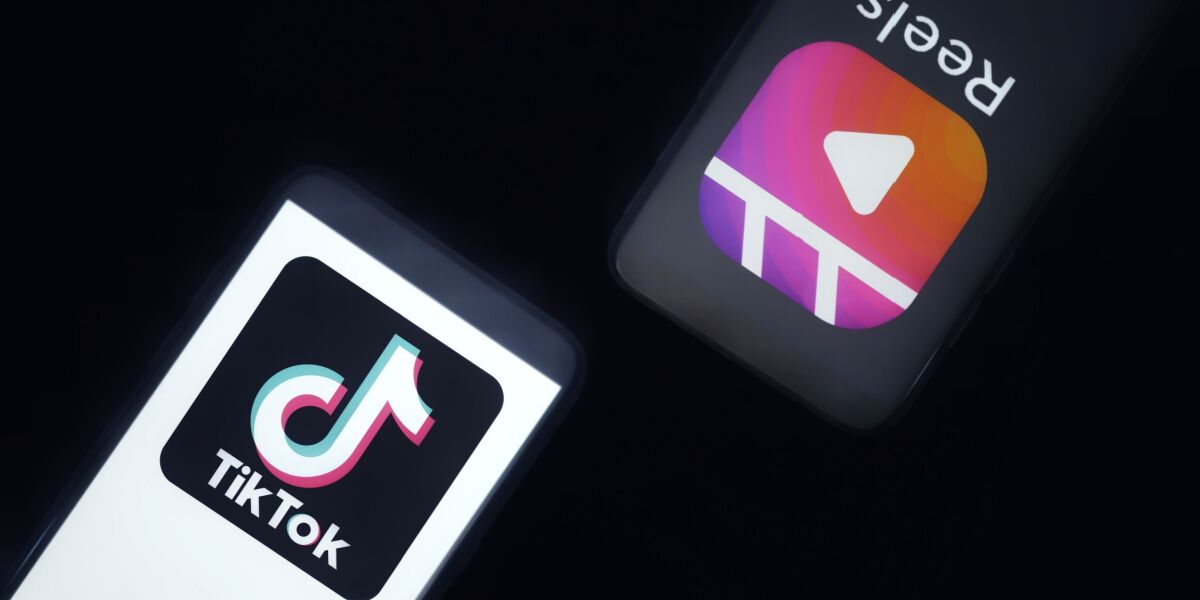It’s a social media battle we’ve seen played out again and again. A plucky upstart, in this case, TikTok, introduces a new service to the world. In response, juggernauts like Facebook scramble to either buy the new technology or bury it by rolling out similar capabilities with their legacy products.
So as TikTok became a staple for younger crowds and the entrepreneurs trying to connect with them, it was unsurprising when Instagram rolled out Reels. After all, TikTok had an exceptional engagement rate and was managing to enter the zeitgeist.
But now that Reels has had an opportunity to refine its offerings, it’s sleeker and more powerful. TikTok, aware of the increased threat, is striving to correspondingly improve their own offerings. Reels has lured many users back to the Facebook ecosystem, as its videos perform almost as well as TikTok’s when average views are compared. Perhaps due to its pioneer status or the fact that it is designed to be more disruptive than Reels, TikTok still enjoys a much higher average engagement per video.
The whole situation has a heightened sense of urgency because short-form video is such a crucial format. With short runtimes and punchy messaging, these videos cut through the clutter and get noticed. More importantly, their lean-and-mean size energizes audiences and prompts engagement more than almost any other format.
In other words, if you want to connect with audiences via video, short-form should be part of your strategy. But which platform should you use for your business?
Evaluating Reels vs TikTok
So who is winning the battle? More importantly, which platform should you use for your business? As is typically the case, you’ll find that both platforms provide distinct benefits, share similar characteristics, and have unique limitations.
Let’s start by looking at a few factors that make these adversaries similar:
- They’re the Preeminent Short-Form Video Creation Platforms: TikTok and Reels both are set up to allow you to edit videos using each platform’s tools. You can also choose sound effects, voiceover, or a musical track to accompany the video. The audio element is far from an afterthought, as the most popular videos on both platforms have reached their status largely due to the strategic addition of songs.
- They have an Ecommerce Component: Both platforms allow you to share products and introduce a way for interested users to make progress toward purchasing. TikTok collaborates with Shopify in order to make this functionality possible, while Reels leverages Instagram’s ecommerce capabilities.
- They Provide an Engaging Way to Discover Videos: Just as Facebook, Instagram, and other social platforms allow you to scroll down through a feed and find new content, these short-form video platforms provide a stream of videos. You just scroll your way along and hope you stumble upon the next diamond in the rough.
Don’t Skip: How to Use TikTok for Your Business in 2024
Reels vs TikTok Features
Now let’s consider some of the key differences between TikTok and Reels. Whether or not these factors are positive or negative depends on your business efforts. That’s why it’s important to already have an idea of your strategies and objectives before comparing the 2 platforms. Here are some key factors to consider:
Audience
- Reels: As you would probably expect, the audience for Instagram Reels is a little older than the audience for TikTok. According to Shoo Social Media, around 22% of their audience is between 18-24, and 33% between 25-34.
- TikTok: Comparatively, TikTok’s user base is made up of 60% users from the 16-24 demographic, although that is likely to become older as the platform becomes more widely adopted.
Discoverability
- Reels: When scrolling through Instagram, you are likely to come across most of your Reels from existing followers unless you are on the discovery page.
- TikTok: In comparison, most of the TikTok content consumed is via a discovery page, making it easier for marketers to reach new audiences.
Video Duration
- Reels: While both platforms focus specifically on short-form content, Reels are limited to just 60 seconds maximum. For longer videos, you will need to split them into different reels to upload or make some significant cuts.
- TikTok: Despite being known as the ‘go-to’ place for short-form content, TikTok videos can actually be as long as three minutes, giving users more scope to publish medium-form content.
Music Options
- Reels: Instagram business accounts are not known for offering a wide range of music options, and its library is often criticized for being extremely limited.
- TikTok: It is no secret that TikTok has had its fair share of issues with major record labels, and as a result, their rules surrounding music use are starting to become much tighter. However, their copyright restriction are still nowhere near as strict as Instagram, giving users more options.
Engagement
- Reels: Regarding engagement, Reels tend to show that they prioritize new account content for organic traffic, likely in an attempt to entice them to continue creating new content, as apps like Instagram only work if plenty of new content is getting generated.
- TikTok: Interestingly, TikTok also promotes new account content in an attempt to turn those users into regular posters. However, it is more difficult for established brands to engage with their audience on TikTok due to the discoverability format.
Editing Capabilities
- Reels: Reels have plenty of in-house editing features to allow you to tweak content before publication. There are also plenty of free and paid apps you can use for more advanced options.
- TikTok: TikTok also has plenty of editing features to utilize, including one additional feature called Stitch, which lets you cut videos together, which is ideal for creating reaction-based content.
Stay Aware of TikTok’s Legal Battles
The strongest advantage Reels has over TikTok is that the platform’s parent company is based in the United States, whereas TikTok is Chinese-backed. American lawmakers are on the hunt to limit TikTok’s use or ban it completely, so make sure aware of the legal battles happening before investing too much energy in building your TikTok.
Keep Learning: 14 Punchy TikTok Marketing Strategies to Amplify Your Growth
Reels vs TikTok: The Verdict
Is Reels the official TikTok replacement? Or is TikTok still the king of the hill? There’s no doubt that TikTok is the best platform when it comes to creating content that capitalizes on the short-form craze. With its brash style and design, it matches its target demographic perfectly.
But we certainly aren’t suggesting that Reels doesn’t have a place in your video strategies. For example, if you have a short-form video that you want to protect from imitation or mockery, you should use Reels because it will prevent other users from merging your video with their own content.
If your target audience is older, Reels could be your better option. Likewise, if you already have a strong following on Instagram, you can leverage that with your Reels content.
Many marketers use both platforms in tandem, as their distinct personalities and audiences allow for more impactful targeting. So let’s put down the swords and just let these 2 platforms coexist. As long as your content is original, and above all else entertaining, it can find a welcome home on both Reels and TikTok.
—
This article was updated with support from Graeme Whiles.


















